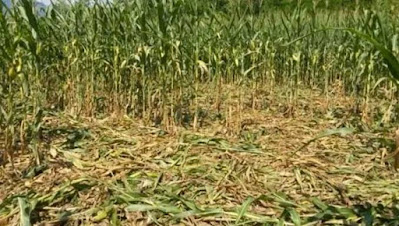Finally, finally, I saw a cinghiale—a wild boar—in Toscana! Actually three cinghiali at once, in a ditch near the Lago di Sibolla. We’ve been coming to Italy for months at a time since 2011, we live in a relatively rural area, and we like going hiking in the woods, so it’s surprising to me that previously we’ve never seen a single boar.
 |
| Not my photo, but a good representation of what I saw. |
 |
| A typical hunters' blind. |
Tuscany has
a love-hate relationship with cinghiali, as many restaurants offer pappardelle
al ragu di cinghiali and other specialties made with the prized meat.
“When it
comes to wild boar meat nutrition, domestic pork can’t even begin to
compare,” says the website of the butcher shop Beck & Bulow of Sante Fe,
New Mexico. “This meat is a great source of zinc and healthy monounsaturated
fats. It also contains thiamine, riboflavin and niacin. These vitamins help our
bodies to convert food into energy, boosting metabolism, nervous system and
brain function. Wild boar is very lean and much lower in cholesterol and
calories than pork, while containing higher levels of protein. Because they are
wild animals, wild boar enjoy a robust nature and are far less prone to illness
and disease than domesticated pigs. Our wild boar meat contains zero sodium,
while farmed pork contains extremely high levels. For this reason, wild boar is
a much healthier choice for heart health.”
The hunting
season in Tuscany usually runs for four months, from October through January, though
only for three days per week: Wednesday, Saturday and Sunday. Our home is near
enough to a forested area that we can hear the popping of rifle shots in the morning
hours. I’ve also walked through the woods during the off-season and witnessed
several hunting blinds. Once, when hiking in the Valleriana area, Lucy and I
found a large pile of bread scraps, obviously left by hunters hoping that the
cinghiali would become accustomed to coming to that area for a good meal—and then
become a good meal themselves when hunting season began.
 |
| A field of corn devasted by cinghiali in Toscana. |
 |
| Here is a grassy field torn up by a herd of cinghiali. |
While hunting
is a popular sport in Tuscany and other regions, hunters can’t keep up with the
burgeoning boar population. It seems that any effort to reduce the population
results in the sows simply giving birth to greater numbers of cinghialini, so
the numbers actually increase.
So with all the
cinghiali out there, I doubt that the three I saw last week will be the last.
Hopefully, Lucy will be with me next time, so she too can experience the thrill
of discovery. And hopefully, the cinghiali will once again run in the opposite
direction.
No comments:
Post a Comment
Comments welcome.